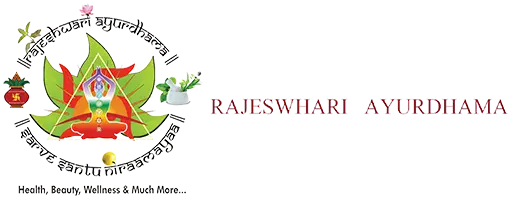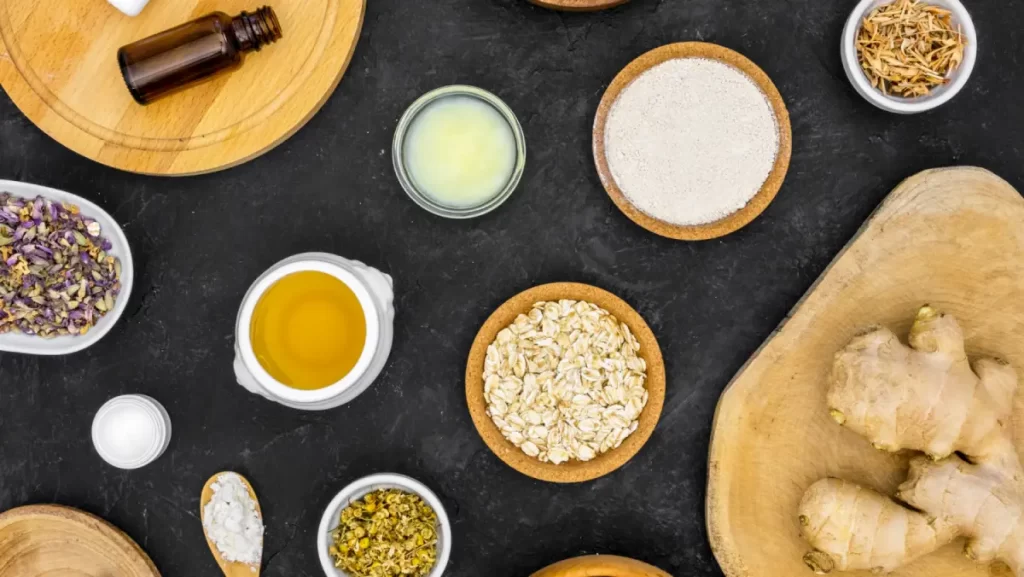Ayurveda have recognised that poor digestion is the main factor of poor health. A healthy digestion should be steady, strong fire to transform the food we eat into easily-absorbed nutrients and easily-eliminated waste. The term used for digestive fire is ‘agni’. When we consume too much or too little food, incorrect or the wrong combinations of foods, we diminish our agni. Poor digestive fire can lead to poor digestion. Undigested food creates toxins (ama)that travel through the bodily channels, and create illness and diseases of an Ayurvedic Nutrition and Diet.
Each person requires a different type of diet based on their body type. As per Ayurvedic diet plan, the ayurvedic diet chart may vary from person to person. For example, a person suffering Vata imbalances or with a strong Vata constitution may counteract the effects of dryness in the body by focussing on moist foods. A person who is dominant in Kapha may counteract the heaviness of Kapha with drier, light, and easy-to-digest foods.
Ayurvedic Nutrition and Diet has different effects on our body depending on the ayurvedic diet plan focusing on foods that are heavy, light, hot, or cold. It means if you have excess Pitta (fire), you have to intake cooling foods. But if you have excess Kapha (cool, moist) you will have to choose warming foods.
What is the Ayurvedic diet?
Ayurveda is a type of comprehensive medication that is centered around advancing harmony between your body and brain.
As indicated by Ayurveda, five components make up the universe — vayu (air), jala (water), akash (space), teja (fire), and prithvi (earth).
These components are accepted to shape three distinct doshas, which are characterized as kinds of energy that circle inside your body. Each dosha is answerable for explicit physiological capabilities.
Guidelines on Ayurvedic Diet for a Healthy Eating
- In an ayurvedic diet plan, try to eat as fresh as possible. You can cook depending on the ayurvedic nutrition just as much as you need for the day, or for the next day. Old food has little or no life force (prana).
- Avoid preserved, frozen, canned, or microwaved foods whenever possible and include freshest food for ayurvedic nutrition.
- Be mindful regarding the strength of your appetite besides how your body feels. Eat enough light foods and do not overeat.
- If you are including heavy foods in your ayurvedic diet plan for weight loss, eat enough to satisfy only half your appetite because heavy foods are difficult to digest. If you are ill, prefer only light foods.
Some examples of light foods and heavy foods in your ayurvedic diet plan include:
- Light foods – Buckwheat, rye, corn, lettuce, tomato, potato, lentils, apple, chicken, rabbit, cow’s milk.
- Heavy foods – Wheat, oats, nuts and seeds, salt, brown rice, onion, cucumber, most fruits, beans, fish, beef, lamb, pork, eggs.
Ayurveda recognises that the substances of food have different effects on the body and mind. The ayurvedic diet plan varies from person to person like designing the diabetes diet chart in ayurveda for patients with diabetes, etc.
How to Eat Food for Your Dosha? (Nutrition and Diet)
Dosha: Vata
Vata influences the movement of feelings, thoughts, nerve impulses, prana flows, and fluids in the body. Their energy in ayurvedic diet plan comes in bursts, and they are likely to experience sudden bouts of fatigue. When imbalanced, Vatas tend to experience weight loss, arthritis, constipation, restlessness, weakness, aches, and pains.
Eating warm, nourishing foods with moderate heavy texture along with butter and fat as are per the ayurvedic diet plan is good for stabilizing Vata. Choose sour, salty, and sweet tastes as well as soothing and satisfying foods. Warm milk, butter, cream, warm soups, hot cereals, stews, raw nuts, fresh baked bread, and nut butters are good for Vatas. All sweet fruits until they become extra-ripe are good to include for a good ayurvedic nutrition diet. Herbal or hot tea, warm drinks or hot water are the best to be included in the ayurvedic diet chart for weight loss for Vatas. Spices like cinnamon, cumin, cardamom, ginger, cloves, and garlic can also be included for Vatas.
Dosha: Pitta
Pittas have more fire in them compared to other types of doshas. They have better appetites and efficient digestion to indulge you to eat just about everything. Most Pittas get into trouble by using too much salt, overuse of sour and spicy food, and overeating, disturbing the ayurvedic diet chart for weight loss.
The best foods for Pittas are warm or cool with moderately heavy textures. Sweet, bitter, and astringent tastes are ideal. Take cool, refreshing food in summer or hot weather, like milk, salads, and ice cream. Herbal tea, specifically liquorice root tea or mint tea are pacifying to Pittas. Vegetarian foods can be included in the ayurvedic diet plan as they are the best for Pittas because consuming red meat tends to heat the body from the fat. Instead, it is better to consume abundant amounts of milk, grains, and vegetables.
Dosha: Kapha
Kaphas tend to have heavier, earthier bodies than other doshas, and tend to store fat and watery substances like fluids more readily. Kaphas have excellent stamina besides smooth, radiant skin. But when Kapha increases the weight, and retains fluid, allergies manifest in the body. Imbalanced Kaphas lead to overweight, excessive sleep, lethargic, asthma, diabetes, and depression.
Choosing the best ayurvedic diet plan with lightly cooked foods, mild spicy foods like cumin, fenugreek, turmeric, and sesame seed, raw fruits and vegetables can go well with Kaphas. Also, dry cooking methods (baking, grilling, broiling, sautéing) are preferable over moist cooking such as boiling, steaming, or poaching. Foods such as lettuce, or tonic water are good to stimulate the Kapha appetite and the preferred spices are fenugreek, cumin, sesame seed, and turmeric.
Food Combinations to Avoid in Your Ayurvedic Diet Plan
Poor food combinations will reduce digestive fire and create or enhance toxins immediately. Pay attention to ayurvedic nutrition on how to combine foods by following the ayurvedic diet chart. It is an important part of a healthy eating plan in your ayurvedic diet plan.
- Avoid mixing milk and fruit or yoghurt and milk as mentioned in the ayurvedic diet plan,
- Avoid drinking milk when eating cherries, melons, bananas, citrus fruits, tomatoes, radishes, potatoes, eggs, fish, meat, and bread.
- Avoid mixing any type of melon with other foods.
- Avoid eating fresh fruit with meals but you can eat cooked fruits with cooked meals.
- Avoid eating milk products with animal protein as mentioned in the ayurvedic diet plan like meat and cheese, milk and eggs, fish and cream,etc.
- Avoid eating light and heavy foods in the same meal (cheese and crackers).
Benefits
The following are a couple of the possible advantages of the Ayurvedic Diet.
Empowers entire food varieties
- Albeit the Ayurvedic diet has explicit rules for each dosha, the eating routine overall energizes eating entire food varieties like organic products, vegetables, grains, and vegetables.
- This can help your wellbeing significantly, as these food varieties are wealthy in numerous fundamental supplements.
Pros and Cons of Ayurvedic Diet Plan
The ayurvedic diet plan includes pros like promoting mindful eating, help in holistic weight loss, focus on whole foods, support general awareness and diet for a sustainable long-term goal. The cons may include difficulty in identifying the dosha, some rules may be difficult to follow like not sticking to the diabetes diet chart in Ayurveda and also it takes time to show results.
Thus, every ayurvedic treatment regime at Rajeshwari Ayurdhama includes an appropriate diet. As a part of their initial assessment, the therapists prepare a customized and healthy ayurvedic diet plan which is extremely beneficial for each patient to meet their needs to the fullest.
Read also Ayurvedic consultation


